Growing jalapeños in pots
Growing jalapeños in pots is an easy way to literally spice up your container garden. They’re not hard to grow, even for beginning gardeners. This post will give you all the details about how to plant jalapeños from seed, how to harvest jalapeños and everything in between.
Jalapeños (capsicum annuum) are a spicy variety of chili peppers. They are considered hot peppers, with a Scoville heat rating ranging from 2,500 to 8,000 units (a bell pepper has 0 and the infamous Carolina Reaper has a terrifying 2.5 million!).
Jalapeños and other chili peppers belong to the nightshade plant family, same as tomatoes and potatoes. It’s technically a frost-sensitive perennial but most often usually grown as an annual.
Members of the nightshade family are container gardening favorites, and jalapeños are no exception!
While the traditional image of a jalapeño is a dark green elongated pod, jalapeños come in a variety of shapes and sizes. They are often green at first but can be yellow, orange or red when ripe.
Jalapeño peppers have a slightly different flavor than other more widely known varieties of chili pepper but share their fiery heat.
One of the best things about jalapeños is their versatility and preservability (is that a word?). They store well for long periods of time if placed in the refrigerator after harvesting. Since they typically measure between 2-3″ long and about 1 inch wide at maturity, they’re perfect for stuffing or pickling whole without cutting into smaller pieces.
Read on for everything you need to know to get some jalapeños going in your container garden this year!
This post may contain affiliate links. If you buy something through these links, we may earn a small commission at no cost to you.
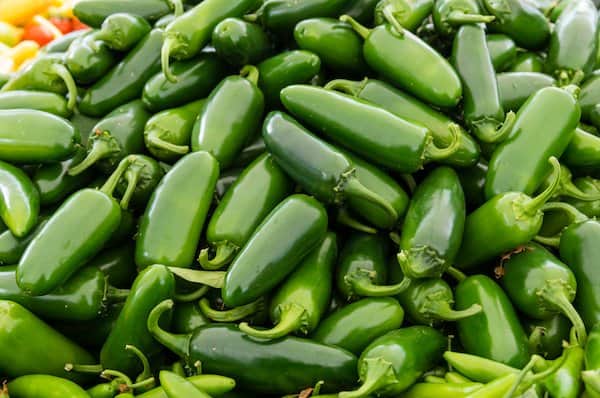
Growing jalapeños in pots
Peppers of all kinds are popular container garden crops. If you’ve grown bell peppers before, try branching out with their spicy cousin!
How to plant jalapeño seeds
When growing a jalapeño pepper plant from seed, sow indoors around 6-8 weeks before the last frost date.
I recommend using a seed-starting medium or high-quality potting mix. Seedlings don’t need much in the way of nutrients for the first few weeks because they actually pull them from the seed itself. So you don’t need a potting mix or fertilizer until later … but potting mix can definitely work as a seed starter.
Recommended seed-starting options:
- Burpee seed-starting coconut coir mix – this little brick fluffs up into a huge bucketful of the popular plant fiber
- Miracle-Gro seed-starting potting mix – it’s hard to argue with the results you get from pretty much any Miracle-Gro mix
Jalapeño seeds sprout fast, in about a week. That’s fun! You’ll have seedlings popping up quickly and raring to go when some of your other plant seeds have barely even sprouted.
One thing to know about jalapeño seedlings: They need a LOT of sunlight and heat. That means you’ll need to give them more heat and light than a sunny window usually provides.
I use a Vivosun seedling heat mat and my seedlings (and I!) absolutely love them. Can’t recommend highly enough. They’re easy to use and clean, and a mat takes the guesswork out of maintaining steady heat. If I were you, I’d grab a couple and park your jalapeño seed tray and whichever others you’re growing on them during germination.
For light, a grow light is really the best way to go. (Unless you live in zone 8 or south, where your temps and sunlight are probably sufficient by mid-spring.) As soon as the seedlings pop up, give them 12-16 hours of light per day.
This portable, super-popular Ezorkas brand dimmable grow light has a USB connection, timer and adjustable clip. Compared to bigger lights you need to hang or rig up, this setup makes it easy to give your jalapeño seedlings good light pretty much anywhere.
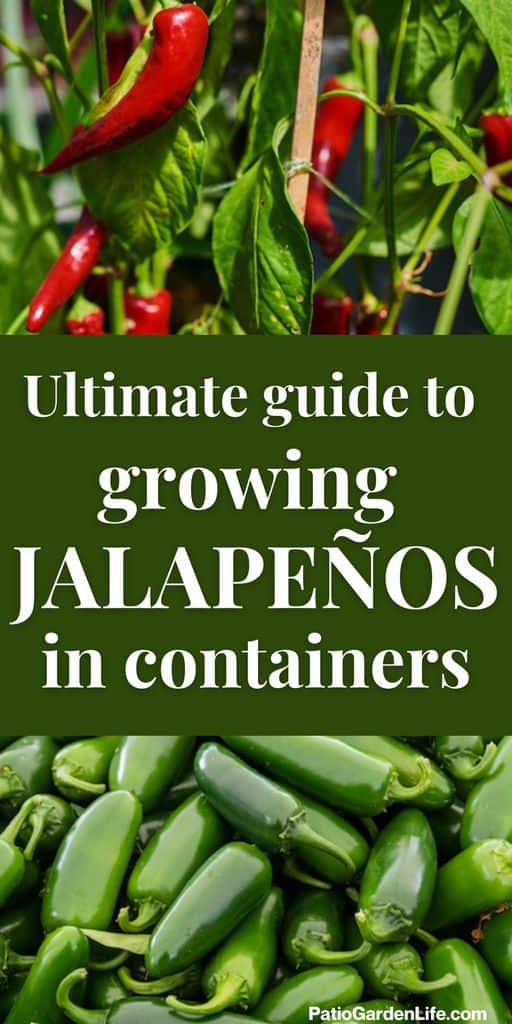
When to transplant jalapeños
Whether you grew your own pepper seedlings from seed or bought some at the farmers market or garden store, make sure to keep them inside until outdoor nighttime temperatures consistently reach at least 55-60 degrees fahrenheit and 70 during the day.
Best jalapeño varieties for container growing
Due to their relatively compact size, jalapeño pepper plants can thrive in containers. But like with any edible plant, some varieties adapt to limited space better than others. This is especially helpful to know if you have a smaller pot or limited space, like on a balcony or small patio.
Some awesome jalapeño pepper varieties for growing in containers:
- Early Jalapeño – small 3″ peppers mature fast, about 63 days
- Jalafuego – large 4″ pods with higher heat levels than other jalapeños, 70 days to maturity
Always check the seed packet before you start seeds, to ensure you know the light and water requirements of that specific variety.
Once you have your plant and container, find a sunny spot that gets at least 6-8 hours of sunlight per day.
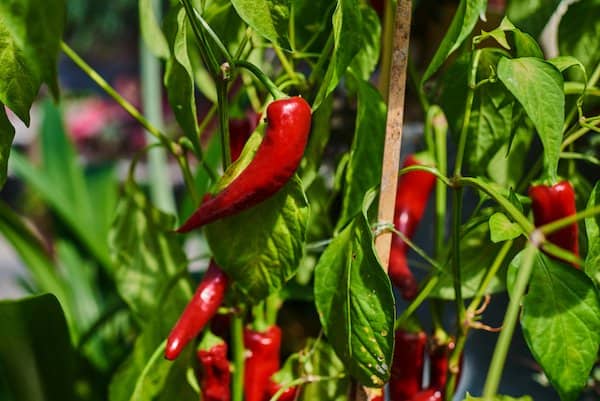
Best containers for growing jalapeños
When it comes to choosing a container, jalapeños need at least 5 gallons of soil. So make sure you have a larger pot with multiple drainage holes.
A 12″ pot or larger will work, as long as it’s at least 14″ deep. (Note: A lot of the gardening blogs suggest 10″ pots for jalapenos, but those aren’t big enough. Most 10″ pots only hold about 3 gallons of soil.)
Also be sure the container does have adequate drainage, as jalapeños prefer soil to dry out a bit between waterings.
You can also use 5-gallon buckets (make sure they’re food grade) or 5-gallon fabric grow bags.
My favorite containers overall are fabric grow bags, which come in a range of sizes. I grow all kind of things in them, from big vining pumpkins to greens like lettuce and kale.
The 5-gallon size fabric grow bag is perfect for a jalapeño plant! They’re reusable, easy to use and move, and do an amazing job with moisture regulation. Highly recommend … I seriously have so many of these.
Can you plant jalapeños from store-bought peppers?
You can try to grow jalapeños from store-bought peppers, but just know you probably can’t count on them!
Green jalapeños are technically immature peppers, so the seeds generally aren’t viable (although you can always try!).
While it’s a fun experiment and it can work, you’ll have a lot better chance of good, viable seeds purchased from a seed company like Botanical Interests or a garden store … or harvested from your own mature plants.
If you want to try growing jalapeños from your homegrown supply, let the pepper pods fully ripen until red, then remove the seeds (carefully and with gloves on!).
How to see if fresh jalapeño seeds are viable
If you’re planning to use them right away, you’ll want to do a seed viability test to make sure you’re getting the best chance of growing actual plants.
One of the easiest ways to test seeds is with a paper towel and sandwich bag. Spread out the seeds on a damp paper towel, then seal inside a sandwich bag. Keep it in a warm spot, like a counter in a sunny window or on a heating mat with a thin kitchen towel between the mat and the bag.
After about 5-7 days, check the seeds. If any have sprouted, you can plant them in seed-starting mix or potting soil and see how they do!
Then try sowing the seeds around 6-8 weeks before your last frost date and follow the instructions above for growing from seed.
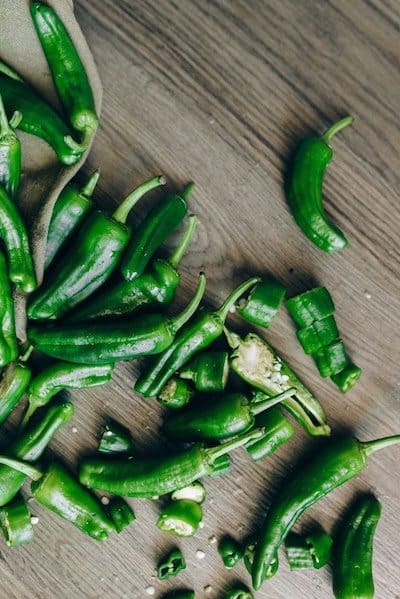
How to dry jalapeño seeds
If you’re not using them right away, it’s necessary to first dry the seeds out completely.
This process, known as “curing” the seeds, will help prevent bacterial and fungal growth.
Dehydrating jalapeño pepper seeds is easy: Just put them in a paper bag and leave sealed in a dry, dark place for about 3-4 weeks.
You can also store the dried seeds by putting them in a jar and sealing it with a coffee filter or paper towel over the top, or lay them out on a paper towel in a dry area with some airflow.
Store in a glass jar until ready for use.
How big do jalapeño plants get?
Jalapeño plants can reach 24-36″ tall and 12-24″ wide. If you regularly prune, they’re likely to stay on the shorter side of that range.
How to prune jalapeño plants
Speaking of pruning … many plants benefit from regular trims to encourage growth, including pepper plants. They have a tendency to get tall and gangly, which doesn’t necessarily hurt production but might outgrow your space or require additional support.
And while it isn’t absolutely necessary for jalapeño plants in particular, pruning can help shape the plant and encourage sturdier stems. The jury is out on whether it increases yield. You’ll read different things from different sources, so while it might help, I wouldn’t count on it.
Pruning is also referred to as “topping” because you cut off the top of the plant.
To prune your jalapeño plant:
- About 6 weeks after the plant sprouts, use sharp, clean garden shears to clip a stem just above a leaf node (the spot where two leaves emerge). Sharp shears are important because a clean cut will heal much faster and doesn’t damage the plant.
- Pull off a couple of the leaves just below the cut, which allows more light to get to the plant as a whole.
- Be sure not to cut back more than 1/3 of the plant at a time.
How to care for jalapeños in pots
The growing time for jalapeños is approximately 60-80 days depending on growing conditions and variety planted. As with any vegetable, some arieties mature earlier than others.
In the meantime, be sure to provide full sun, plenty of heat and consistent (but not too much) water. Read on for details.
Best soil for jalapeños
While they don’t need a ton of extra nutrients or have very specific soil requirements, jalapeños need well-balanced potting mix with organic matter and a little slow-release fertilizer (keep reading for fertilizer instructions).
The potting mix should have a good balance of organic matter, peat moss and other components to ensure adequate soil moisture regulation.
Jalapeños like the soil to dry out a bit between waterings, so you don’t want soggy, heavy soil.
Recommended potting mixes:
- Nutrient-rich, well-balanced Miracle-Gro potting mix will give your plants a good head start. I’ve experimented with a number of potting mix brands, and very few can compete with the results you get from this old standby.
- Fox Farm Ocean Forest is a super-popular variety I recommend if using organic fertilizer is important to you. This one uses earthworm castings, bat guano, fish meal, humus and more.
Check out my Potting Soil 101 post for lots more detail about potting soil and what goes into it!
Watering instructions for jalapeños
Jalapeños thrive in slightly dry conditions, so take extra care NOT to overwater them. Allow the top inch of the soil to dry out between waterings.
You can easily test the soil with a finger to make sure it’s not too moist. If it’s dry, water thoroughly until water begins to drain from the bottom of your pot.
If you want extra spicy peppers, some experts recommend water-stressing the plants. Basically just go longer between waterings. Withholding water encourages the plant to produce more capsaicin, an active component in pepper plants.
Fun fact: Capsaicin is technically a chemical irritant that evokes a burning sensation … AKA spicy flavor!
Fertilizer instructions for jalapeños
You don’t need to add a lot of fertilizer when you’re growing jalapeños in pots, especially if you’ve already planted them in well-balanced potting soil. Too much fertilizer can actually backfire, boosting foliage growth but limiting flower and pod production.
For plants that don’t need a ton of extra nutrients, I’m a fan of slow-release fertilizer you can mix into the potting soil when you plant just about any container garden plant. It gives a slow, steady, basic level of essential nutrients for the first couple of months. It’s not overpowering and serves as a nice complement to the nutrients in high-quality potting soil.
My favorite is Jobe’s Organics Time-Release Plant Food, by far. It’s an awesome all-purpose fertilizer and I use it with everything.
If you want to learn more about the world of container garden fertilizer, my Fertilizer 101 post breaks down the mystery behind NPK ratios, when to use or avoid nitrogen-heavy fertilizers, and lots more.
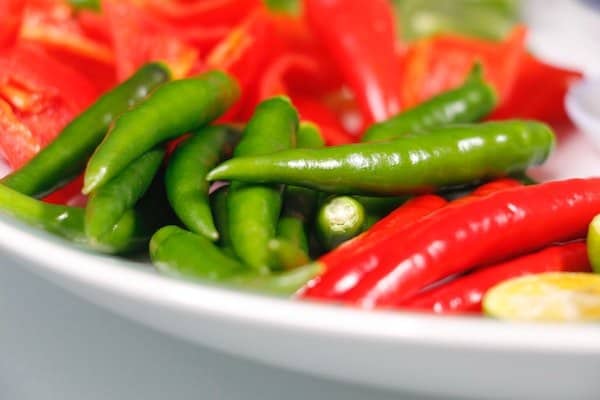
Growing jalapeños indoors
You can grow these peppers indoors over winter, but remember they need a lot of light and heat. So you’ll need to provide grow lights and make sure they’re in a warm spot. If not you’ll need to keep those heat mats going.
For these reasons, jalapeños are really best grown outdoors during the hot, sunny summer months. But you can always try!
How to harvest jalapeños
Jalapeño peppers are ready to be harvested when they reach 3-4″ long, about 60 days after transplanting. The pods should also appear firm and have a nice dark green color.
At this stage, green peppers are on the mild side flavor-wise. If you leave them alone a while longer, they’ll start to turn black and then red and get spicier as they go.
Fun fact: Chipotles are actually dried, smoked red jalapenos!
Harvest jalapeños by snapping off the pods or clipping with a pair of pruning shears. Cut growing jalapeño plants at an angle just above a leaf node. The stems can be left on the pods until you’re ready to use them.
Jalapeño plants can be harvested daily or every other day to encourage continued production.
When handling jalapeños, like with any hot pepper you should be extra careful about touching the interior of the pod, including seeds. That’s where capsaicin is concentrated.
Even a little on your hand can transfer to your eye or anywhere you touch and cause extreme irritation. So be sure to wear gloves and wash hands thoroughly after handling.
What is the Scoville scale?
In the opening of this post, I mentioned where jalapeños fall on the Scoville scale. You might be wondering … what the heck is that? (Or maybe you already know, but this is still interesting!)
The Scoville scale is a measurement of how much dilution of a liquid is needed per milliliter to create a sensation with no spiciness. As I mentioned earlier, capsaicin is what causes the spiciness in hot peppers, including jalapeños.
The higher the number, the hotter it is on the Scoville scale, because it would take more and more dilution to take out that hotness.
As measured by the test, the capsaicin content in peppers ranges from zero Scoville units (green bell peppers) to over 2 million Scoville units (Carolina reapers). Yikes!!
Scoville ratings of some common peppers:
- Anaheims: 500 to 1,000
- Poblanos: 500 to 1,000
- Chipotles (smoked, dried jalapeños): 1,000 to 2,000
- Jalapeños: 2,500 to 5,000
- Serranos: 2,500 to 8,000
- Cayenne peppers: 30,000 – 50,000
- Habaneros: 100,000 to 350,000
- Ghost peppers: 855,000 to 1,463,700
- Carolina reapers: 2,200,000 to 2,500,000
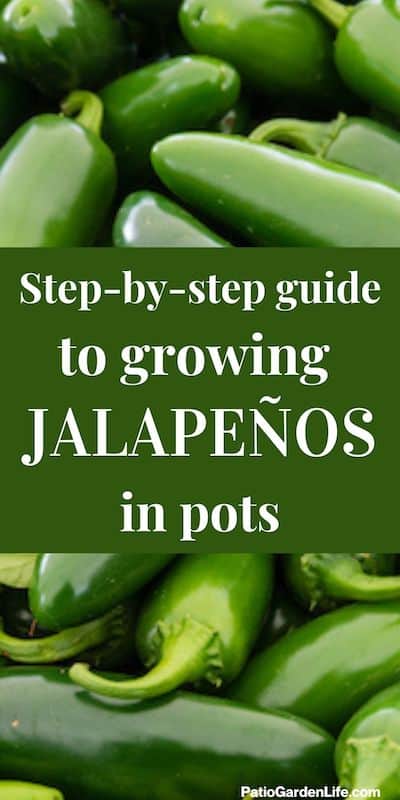
How to preserve jalapeños
There are so many ways to use jalapeños in the kitchen, from hot sauces and soups to favorites like stuffed peppers, tacos and nachos, chili, pepper jelly and so much more. The Chili Pepper Madness blog has a ton of great recipes and ideas for what to do with all those peppers you’re growing!
If you grow more than you can use right away, or if you just want to keep some homegrown jalapeños for later, there are a number of great ways to preserve them:
No matter what you do with your peppers, it will be so fun to use the ones you grew yourself, right on your patio, deck or balcony!



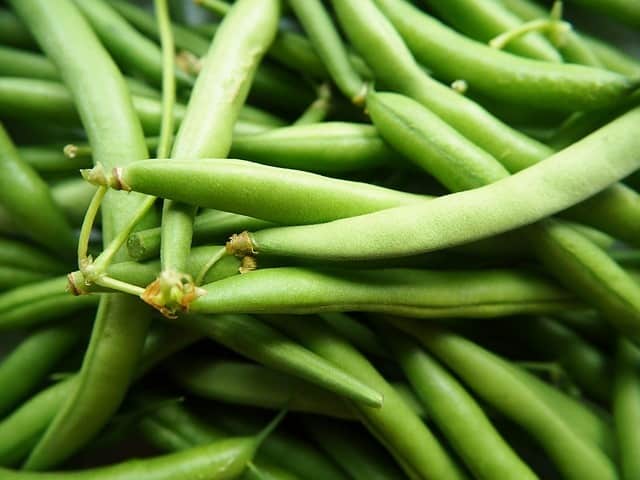
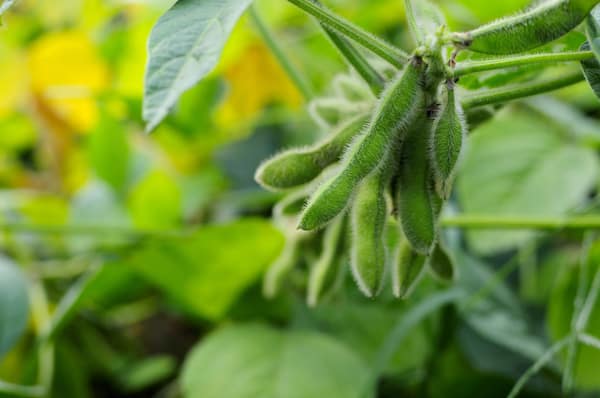
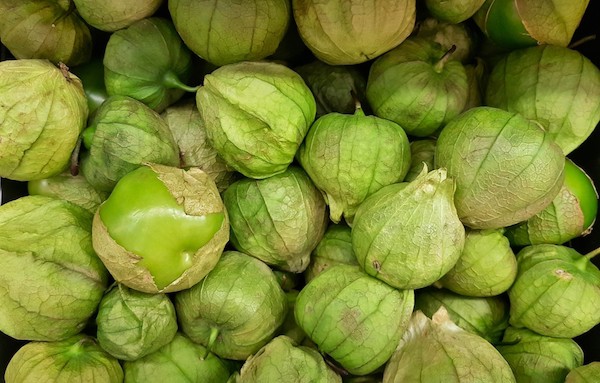
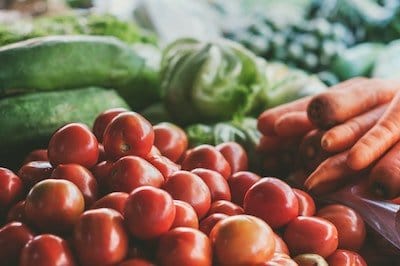
In a 5 gallon grow bag, how many seedling plants do you plant?
Hi Megan! In a 5-gallon bag, I recommend planting just one well-established seedling. Or you could plant two or three smaller seedlings and thin to the strongest one after a week or so. (If you go that route, be sure to thin by snipping off the stem at the soil level with scissors, rather than pulling it out by the roots. That could damage the stronger seedling’s roots.) Happy growing!